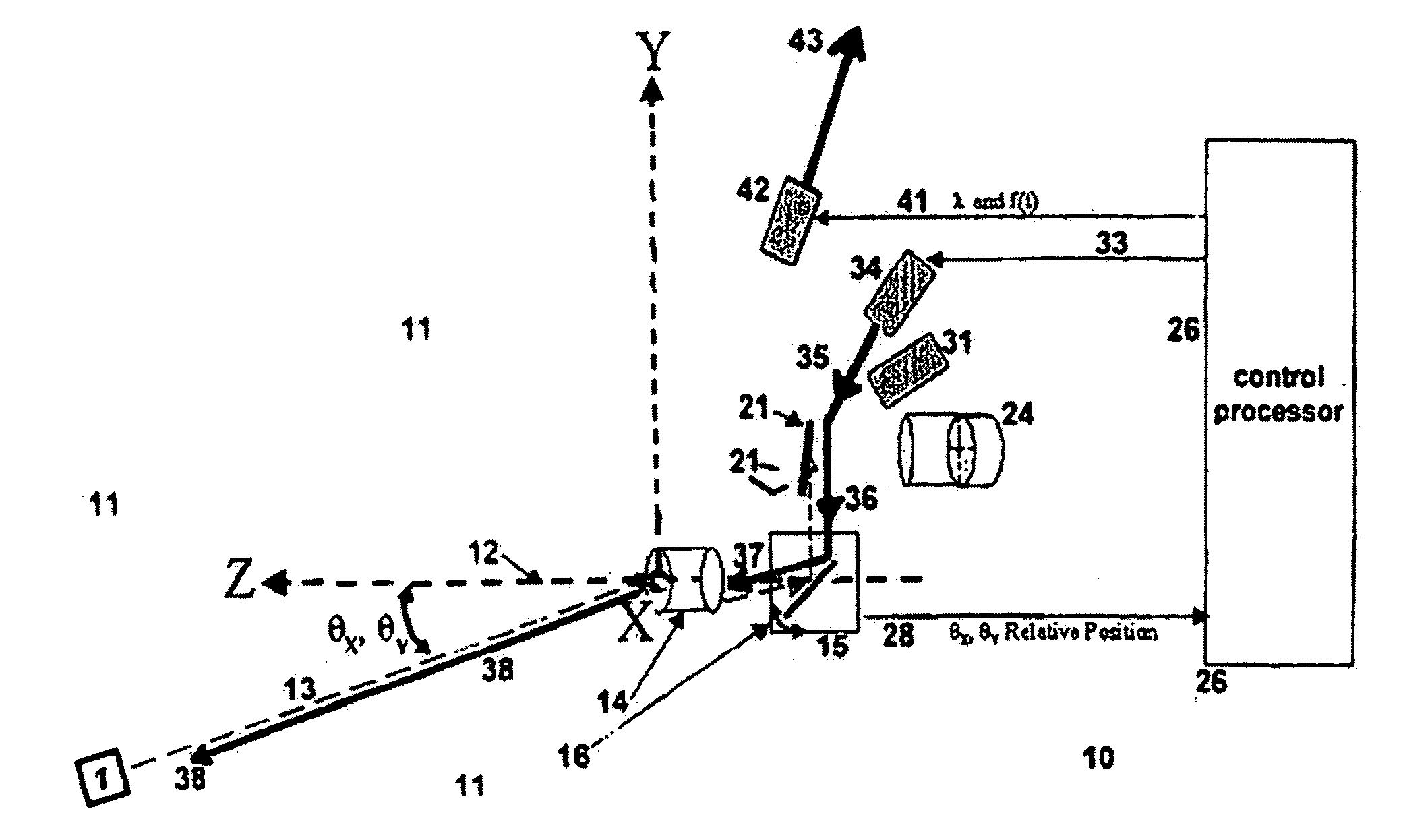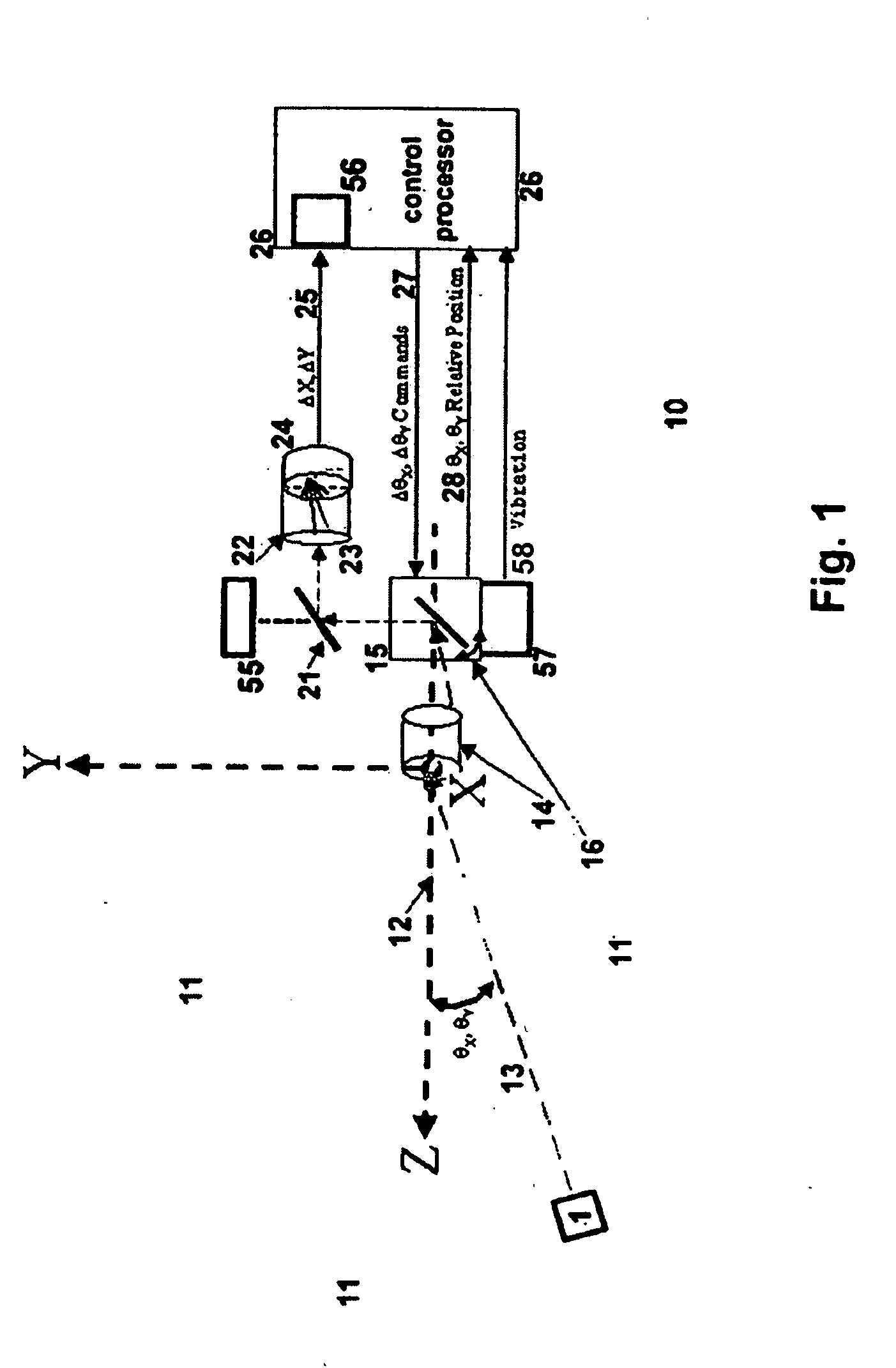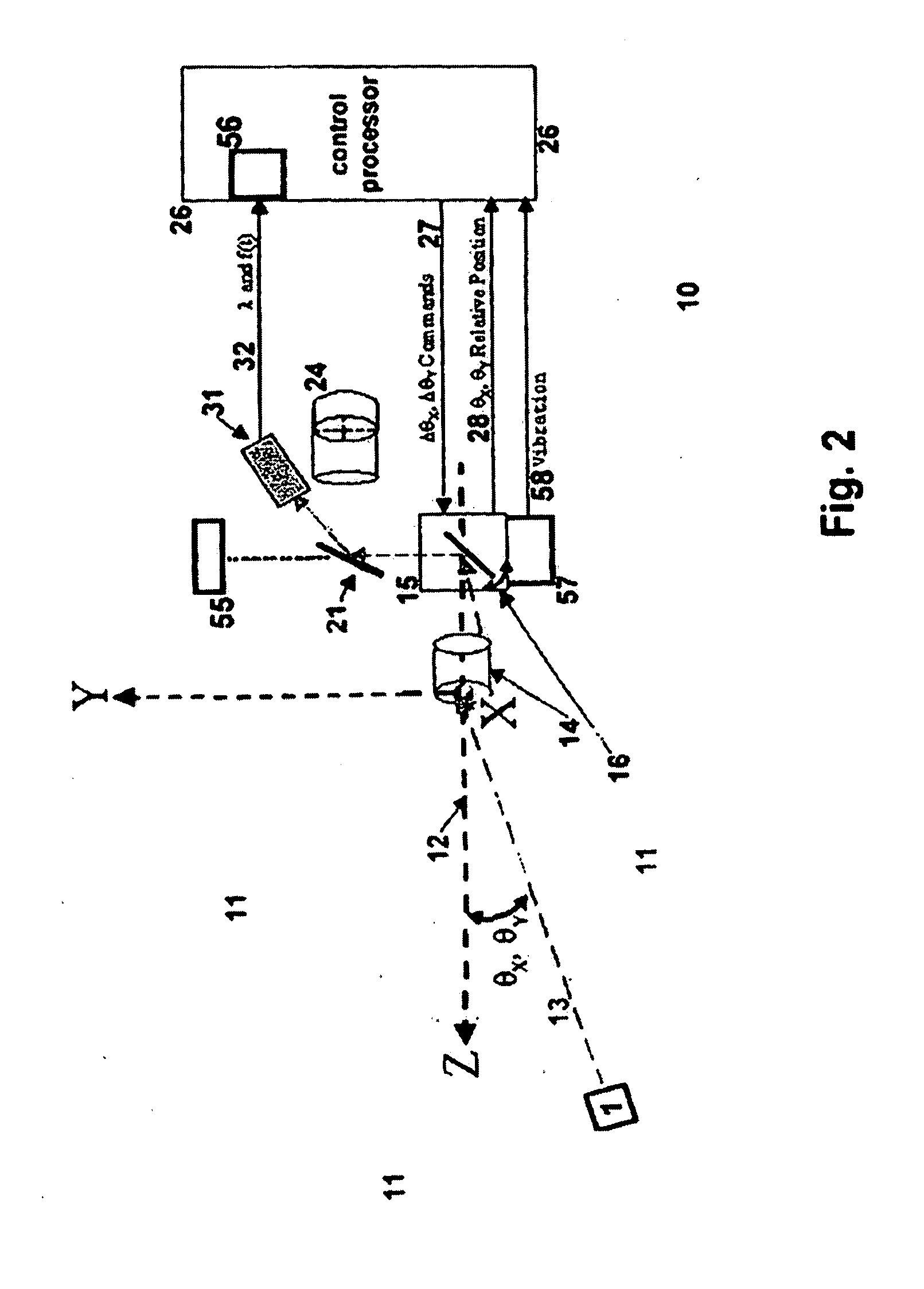Optical system
a technology of optical system and optical axis, applied in the field of optical system, can solve the problems of large motor and elevated power requirements, significant handicaps, unreliability and even failure, etc., and achieve the effect of not sacrificing angular sensitivity or precision
- Summary
- Abstract
- Description
- Claims
- Application Information
AI Technical Summary
Benefits of technology
Problems solved by technology
Method used
Image
Examples
Embodiment Construction
[0117] In preferred embodiments, the invention provides a low-cost sensor system 10 (FIG. 1) capable of detecting and locating active illumination sources—or objects illuminated by such sources. In some preferred embodiments (FIGS. 2 through 4), the sensor system of the invention can also respond to the detected light source by returning a light beam 38 (FIG. 3) or an object, and in some cases by initiating a distance-determining or other investigation (Function 4, FIG. 4) of the source or objects associated with the source.
[0118] In particularly preferred embodiments, initial detection of a radiation source or illuminated object is qualified by filters that implement expectations as to the characteristics of such sources or objects that are of interest. For instance, when anticipated sources are infrared, or are in other particular spectral regions, spectral filters are placed at convenient positions in the optical path—usually but not necessarily associated with the fold mirror 2...
PUM
 Login to View More
Login to View More Abstract
Description
Claims
Application Information
 Login to View More
Login to View More - R&D
- Intellectual Property
- Life Sciences
- Materials
- Tech Scout
- Unparalleled Data Quality
- Higher Quality Content
- 60% Fewer Hallucinations
Browse by: Latest US Patents, China's latest patents, Technical Efficacy Thesaurus, Application Domain, Technology Topic, Popular Technical Reports.
© 2025 PatSnap. All rights reserved.Legal|Privacy policy|Modern Slavery Act Transparency Statement|Sitemap|About US| Contact US: help@patsnap.com



